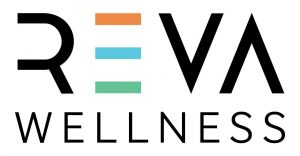Brought to you by Reva Wellness
From our article Exercise 101, you know why exercise is an essential part of human health and you are familiar with the physical activity recommendations for health. Over the Exercise 101 chronicles, we are going to unpack this for you.

What is Cardio?
Cardio, technically known as Aerobic Exercise, is the repetitive movement of the larger muscle groups, that increase the heart rate and acute energy expenditure.
There is an increased demand of the heart, lungs and blood vessels (cardiovascular system) to supply oxygen to the working muscles.
Generally, “Fitness” refers to endurance, indicated by higher ability to maintain distances and durations.
But have you ever wondered what’s going on inside the body?!
The muscles become better at extracting oxygen and metabolising energy, the lungs take in more oxygen and the heart pumps out more blood. This is why fitter people have lower heart rates!
Examples of cardio activities include walking, running, swimming, cycling, skipping, dancing, stair climbing, rowing.
Benefits of Cardio
Some benefits that can occur immediately and some require continual work.
Immediate benefits include lowered blood pressure (through improving the elasticity of your blood vessels) and improvements in mood (with the stimulation of various endorphins).
Cardio has also been shown to strengthen your brain! It stimulates new brain cells and pathways, improving learning, memory and focus!
Performance of regular aerobic exercise can assist in weight management programs, decrease the risk of various diseases as well as improve memory.
How much Cardio?
30-60 minutes per day of moderate-intensity cardio, 5 days per week, is the recommended amount.
It does not have to be 30-60 minutes all at once. It can be spread out through the day, as long as you’re getting your heart rate up and breathing rate up!
For intensity guidelines check out our Exercise 101 article.
🤓 Interesting facts
Aerobic exercise predominantly uses the “slow twitch” muscle fibres.
A literal example of these muscle fibres can be found in beef (sorry vegetarians). The meat is red because of the higher content of myoglobin of the muscle fibres. Myoglobin stores the oxygen and transfers it to the muscle cells. Oxygen is used to break down carbohydrates and fats, eventually into a chemical called ATP which gives us energy!
Fun Facts
Running on medium-hard surfaces is one the best ways to increase bone strength of your legs and hips and back. Our bones respond to the applied force by increasing their density!
Running and swimming are not only great cardio exercise which uses most of your muscles, but they can also be a great core exercise!
This is because you need to maintain optimal torso postures to allow your body to generate superior force through the limbs.

Myth Buster
Cardio does not burn muscle!
This may be true if you are in a nutrient or calorie deficit, but in most cases, this is far from reality.
Cardio exercise has actually been shown to increase muscle mass and strength, and when combined with strength training, it can enhance muscle growth! For best results, separate aerobic and strength training by 6-24 hours.
Evidence
Hopefully, that got your hearts racing with excitement and motivation to hit that cardio. Adiós!
